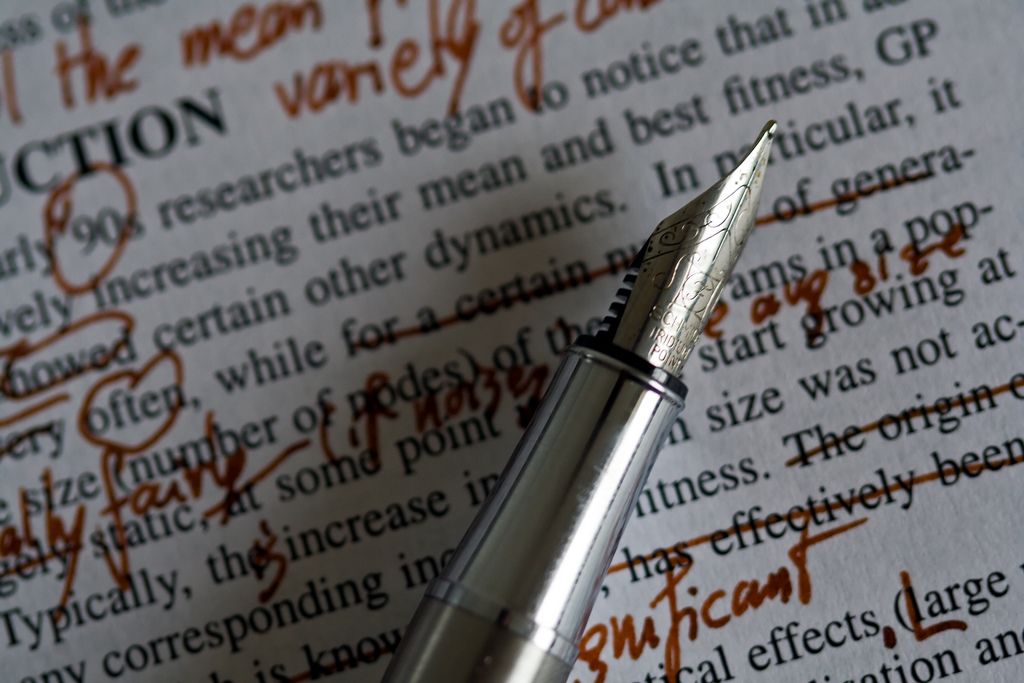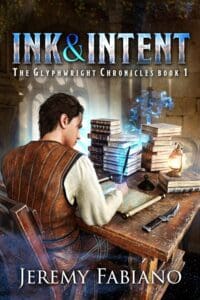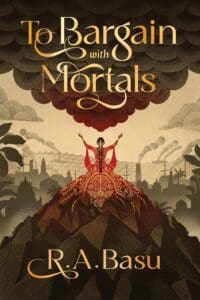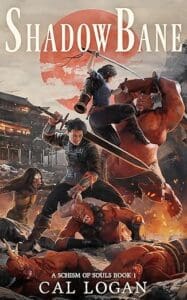
Revising Your Way to a Better Novel
Writing is revising. Somebody said that. I’m not sure who it was—probably more than one person came up with it independently. It’s not a particularly earth-shattering concept. Everyone has to revise.
Okay, maybe a few people don’t. Maybe there are mythical unicorns who spit out perfect novels on the first draft. I’ve heard some people claim that—even some well-known authors. Personally, I don’t believe them.
But me? I revise. I revise a lot. For each of my novels, I’ve averaged somewhere between seven and ten drafts. So that begs the question: What do I do in each of those drafts?
Before I get into it, let me tell you what I tell people every time I give writing advice: There is no single right way to write a book. This is one way. It happens to be the way that works for me. I’ve had some measure of success. But I’m not implying that if you do it this way, you will also have success. You should take it for what it’s worth—use the parts that help and discard the parts that don’t. Do what works for you.
With that out of the way, I’m going to break down revising into four sub-topics:
- Getting feedback
- Revising the overall book
- Revising scenes and chapters
- Revising sentences
When I revise, I might be doing multiple categories at one time, but I think for discussion purposes, it helps to consider them independently.
Getting Feedback
There are people who write books without the benefit of early readers. I’m not sure how. But even those people have editors and copy editors, so somebody else is giving them input on their book. It’s a scary thing, getting the opinion of someone else on your book, but to me, it’s a necessary step. Every time I write something and think it’s good, someone reads it for me and points out things I’ve missed. Often, I learn that it was, in fact, not good. Sometimes the things I missed are obvious, and I just didn’t see them. It’s really easy to have the information in your head and fail to get it onto the page, and a reader can point out those holes. Which is great. Because then I make it better.
Here are a few tips for making the most of the feedback process:
1. The quality of feedback matters. When I say reader feedback, I don’t mean your mom (or anyone else in your family. Or your friends.) Your mom and your family are going to tell you that it’s good. They have to. In theory, they love you. Unless you have a really weird relationship with your mom—but that’s not what we’re here to talk about. What I mean is that feedback from people who like you but aren’t themselves writers is rarely helpful. If someone reads your book and tells you it’s good and you don’t need to change anything—well, it feels good, but it’s useless. It’s the worst kind of feedback. The goal is to make your book better, and the only way to do that is to get good critique—to learn where you can make it better. Some sophisticated readers can do that, but usually, that means getting feedback from other writers.
The bottom line is this: The better the feedback, the better your revision will be. So seek out tough criticism from other writers. Often, that means you’ll have to give them critique as well. I’m not going to spend much time on that here, because that’s a different post. To keep it short, you need to learn how to do that well. It will help your writing partners, and it will help you learn how to evaluate your own book as well. It will also ensure that you always have willing readers (because they want you to read for them in return.)
2. Your attitude matters. To make use of feedback, you have to want feedback. I’ve worked with authors who don’t really want feedback. They say they do. I don’t know why. Maybe because they know they’re supposed to?
You can’t go into it thinking that everything is perfect in your book and anybody who doesn’t agree is wrong. There’s no point. You’re not there to defend your book, or why you did why you did. You’re there to make your book better. So listen to what people say, give it real consideration, and then, if it applies, apply it. But…
3. Not all feedback is good feedback. Sometimes you’re going to get feedback, and after considering it, you’re going to decide it doesn’t work for you. And that’s okay! The fact that you considered it honestly means you thought about your book. Sometimes you’ll get conflicting feedback from different readers. That’s okay too! That often means that there’s a problem somewhere, but maybe nobody is quite putting their finger on it. Maybe when the reader tells you that they don’t understand something and they think you should clarify it, you’ll fix that issue by working on a completely different scene. Or maybe one set of feedback really resonates with you. Go with that one. Often, when you do, you end up fixing what the other person said as well. After all, there’s more than one way to fix a problem.
4. There are different kinds of feedback. When you get some practice and get a good feel for your readers, you’ll know where their strengths and their weaknesses are, and be able to use them accordingly. For example, I’ve got a tech guy. He’s a professional writer, and he can give me feedback in a lot of areas, but he’s an absolute expert on technology. Since I write science fiction, that’s a huge help. Other people might be good at characterization, or setting, or tension. Ideally, you’ll want to find readers who are good where you’re weak, or who have knowledge of things you don’t. For example, if you’re writing a story set in a real place, having a reader who is from that place can solve all kinds of little issues.
5. Figure out what you’re comfortable sending out for critique. I never send anybody my first draft. Because I write really, really rough first drafts. I always do a second pass – the first revision – on my own, before I send it out. Everyone is different in this, but the better something is when you send it out, the easier it is for someone to critique it.
Revising The Overall Book
I put this first out of the three revision sub-topics, because I find that a lot of people start with the smaller picture – the sentences – and to me that doesn’t make any sense. Often when you hear people say “I’m revising,” what they really mean is they’re rewording. To me, there’s no point in revising your wording if the story doesn’t work. And as you find the holes and revise the book, you’ll be changing your sentences anyway. For me, I’ve had published books where I’ve changed as much as sixty percent of the story in one revision (after receiving notes from my editor, on COLONYSIDE. And again on THE MISFIT SOLDIER.) It happens.
Some things to look for when revising the overall plot:
1. Structure/plot points. Do key events happen at each point in the book? Does the action build through the first act to a high point, and then build again to a high point at the end of act two, before moving into the third act and the climax? Are their major plot points in each act of the book? Is there a significant discovery that changes how the main character (and reader) perceive the story at the mid point?
While you don’t have to have all of these, if you don’t, it can be a sign that your book is missing something, and that can affect the pace or the tension throughout. One way to look at it is to think about your plot as a whole, and write down the high points – the things where things are most important and the scenes that are the most intense. Graph out where they fall (by percentage) in the book. When you look at this, do things fall evenly throughout, or is there a big gap somewhere? If there’s a gap, that’s a sign that you might have a structural issue, and maybe you’re missing something.
You can also look at individual events and where they fall. When I was writing SPACESIDE, I found that my key twist was happening at the 38% mark of the book when it should have been around 50%. What I figured out from that was that I was missing a plot point in the first half of the book. Not enough was happening. Knowing that, I was able to get that sorted in revision by adding another event early on in the book.
2. Character arcs. Even when the plot is straight, it’s good to look at character arcs for your major characters (at a minimum, POV characters, but you can do it for major secondary characters as well.) We all know that a character has to develop throughout a book and end in a different place than where they start. When you look to revise character arc, you can look at where they start and where they finish, and then chart the points along the way. Do we see them changing? Is that change shown throughout? Is it an arc, or are there large sections of book where there are flat spots and they aren’t changing? Are they making the same mistakes twice?
Looking at these things can make your character more interesting and make them feel like they are growing and learning throughout the book.
3. Themes. This one might depend on how you write. Some people have their themes when they start writing. For me, they kind of develop as they go. So it isn’t until the book is complete in draft that I realize what the themes are. So it’s something I think about in revision, once I know that. Once I have the themes, I sometimes go back and try to bring them out more throughout the book.
Revising Scenes
Sometimes the thing that is messing with your pace is your overall plot, as mentioned above. But sometimes it’s scene by scene. Every scene in a book should pull its weight. That means it’s either advancing the plot or developing the character. Ideally, both.
Here are a couple things to look at for each scene:
1. Does the POV character end the scene in a different place than they started? If not, you don’t have a scene. This change can either be plot related or character related, but something must have changed, or what’s the point of the scene? I know I said earlier that there’s no one right way, but this is as close as it gets. A scene needs to do something. I don’t think that’s particularly controversial.
2. Look at where the scene starts and ends. Are those things in the right spot? Often, I find that I start a scene too early, and there’s a page or two before we really get into what’s important. If that’s the case, cutting that and entering the scene later can do a lot to shore up your pace. Likewise, when a scene is done, get out of it. For me, I find that what this usually looks like is travelling—getting to the point where the scene takes place. That’s almost always filler. Try to cut it and just start at the place where the scene takes place.
3. Does your character have a clear goal, obstacle, and stakes in the scene? Part of what helps us connect to a character is knowing what they want. When that happens, we are able to root along with them as readers, and also, when we see those desires starting to go awry, it hits us harder because we can see things falling apart. As readers, we will only care about what the POV character cares about. If it doesn’t seem significant to them, it won’t seem significant to the reader.
Revising Words
When you talk about editing, this is what a lot of people think you mean. Revising sentences so they read better. I’m covering it last because I think it’s probably the area that most people already know the most about.
Here are some considerations when revising words:
1. Does it flow? This is a pretty generic thing but encompasses a lot. Look for areas where you have sentences that are all the same length. Look for sequences where multiple sentences start with the same word.
2. Do you rely on the same action beats too much? For me it’s nodding. My characters nod a lot. They’re very noddy. Other candidates include shrugging, eyebrow movement, etc. Think about how often you do those things in real life and try to apply that to your characters. And switch it up.
3. What are your junk words? For me, they’re ‘well’ and ‘so’ and ‘just.’ I overuse them, and they’re often unnecessary. In one of my final revisions, I’ll do a word search for each of them and delete the ones I don’t need.
4. Is your writing active enough? One way to look at this is to look for active vs. passive verbs. Active verbs make for better writing. So look for passive verbs – usually ‘to be’ verbs – and see if there’s a way to rewrite the sentence to make the verb stronger and the sentence more active. This isn’t saying you should do that in every case. You definitely shouldn’t. There’s no problem using to be verbs. The problem comes if you’re over using them. One way to look at this is to do a word search for was/were (or, if you write in the present tense, am/is.)
And that’s it. That’s what I’ve got on revising. It’s fresh in my mind, because in writing both my fourth and fifth books (THE MISFIT SOLDIER and THE WEIGHT OF COMMAND) I feel like I’ve now been revising forever.
I hope that some of what I wrote here helps you with your own revision, or, if not, it helps you find a way to think about what works for you. Good luck, and happy revising!

About the Author
Michael Mammay is the author of the PLANETSIDE series, from Harper Voyager. His next novel, THE MISFIT SOLDIER, comes out on 2/22/22 – check out the cover reveal HERE!
He is a retired army officer and teacher, and is now a full-time writer. He lives with his wife in Georgia. You can learn more about him at his website, michaelmammay.com.
Twitter: @MichaelMammay
Facebook: @MichaelMammay
Goodreads
Amazon




Leave a Reply